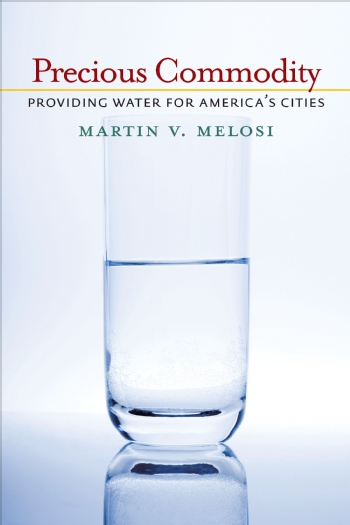News & Events
The history of getting water to America’s cities
History Professor Martin Melosi examines urban struggles with locating and allocating water
In the 1970s, when environmental issues focused on nature and the wilderness, Martin Melosi, Hugh Roy and Lillie Cranz Cullen Professor of History and director of the Center for Public History, felt cities were being left out of the environmental discourse.

“Martin Melosi has been a pioneer scholar in the fields of environmental and energy history and especially in the history of the urban environment,” said Joel A. Tarr, Richard S. Caliguiri University Professor of History and Policy, Carnegie Mellon University.
“Melosi started working in the field of environmental history in the 1970s. He is one of the earliest people in the area of urban environmental history,” said Joseph A. Pratt, Cullen Professor of History and Business. “There are two people really considered the ‘fathers’ in that subfield, Martin Melosi and Joel Tarr."
Melosi adopted an interdisciplinary approach that incorporated work from geographers, city planners and other social scientists. He challenged the standard discourse in the young field of environmental history that frequently focused on wilderness or agriculture and argued that cities should be viewed as ecosystems with a physical, biological and social structure.
“He has an uncanny instinct to focus on historical issues that have great contemporary significance, as is reflected in his most recent book, Precious Commodity: Providing Water for America’s Cities,” Tarr said. “Through his research and writing, Melosi has provided us with insight into some of the most pressing issues facing cities today and laid out a major path for graduate students and environmental history and studies to follow.”
Precious Commodity: Providing Water for America’s Cities is a book of essays on water use and management based on 40 years of extensive research into contemporary periodicals, government reports, city publications, and the proceedings of several engineering and public health associations. Melosi provides a historical background on construction, administration, and adaptability of water supply and wastewater systems in urban America. He cites budgetary constraints and the deterioration of existing water infrastructures as factors leading many municipalities to seriously consider the privatization of their water supply.

“There are concerns for fresh water in the United States as demand for water has tripled and the population doubled. Fresh water is a finite resource with demand on the rise and higher prices to follow,” said Melosi. “There is enough freshwater on the planet for six billion people, but it is distributed unevenly and too much of it is wasted, polluted and unsustainably managed.”
Research shows that every year millions of people, most of them children, die from diseases associated with inadequate water supply, sanitation and hygiene. According to the United Nations, water scarcity affects approximately 1.2 billion people in the world, and it estimates another 1.6 billion people face an economic water shortage where countries lack the necessary infrastructure to take water from rivers and aquifers.
In Precious Commodity, Melosi explores the role of government in management, development and legal jurisdiction over America’s rivers and waterways for hydroelectric power, flood control, irrigation, and transportation access. Looking to the future, Melosi compares costs and benefits of public versus private water supply, examining the global movement toward privatization.
“With domestic and international conflicts over water destined to intensify during the 21st century, Melosi’s historical insights will help all of us argue in a more informed manner about our collective future,” said Jeffrey K. Stine, curator for environmental history at the Smithsonian Institution, National Museum of American History.
Melosi dedicates a chapter in his book to the historical significance of Buffalo Bayou, a water artery running through the City of Houston. It was designated as the National Highway of the Republic of Texas in 1840, as early settlement occurred and the bayou became an essential means of transport and commerce, as well as a recreational focal point. Another chapter addresses Houston’s public sinks, noting the city is unique in that private businesses rely so much on public systems in a place that prides itself on individual initiative.
“Growth in Houston has been a relentless adversary in providing adequate sanitary services,” said Melosi. “Developing an adequate water supply for Houston meant seeking sources of water many miles from the urban core and creating delivery systems that impinged on areas outside of Houston.”
Melosi does not consider the water crisis to be about supply, but rather about location and allocation.
“These are really questions of geography, location and circumstance, as much as they are the question of abundance, he said. “You can’t divide the total amount of fresh water into pieces allocated according to population size. It just doesn’t work that way.”
- Melissa Carroll